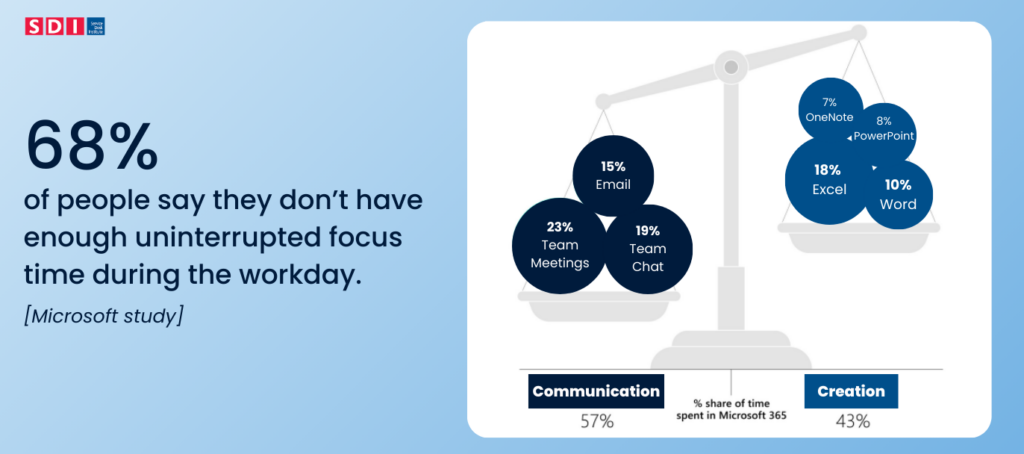 Back to Resources
Back to Resources
IT staff management has changed significantly over the last few years. Many organisations face new challenges today, such as increased workloads and budget constraints, rising cybersecurity concerns, and leadership struggles with maintaining staffing levels.
Managers are feeling the strain, too. They’re often overwhelmed, struggling to balance strategic tasks with daily responsibilities. Employee engagement also suffers due to the complexities of new flexible work environments or a lack of clear communication and purpose-driven work.
So, the big question is, what does effective team management look like today? How do you balance time, resources, and well-being to ensure your team remains productive and motivated?
💡 In this blog, we’ll discuss the current state of IT staff management and explore some common challenges, mistakes, and best practices.
The current state of IT staff management
Before diving into the challenges and tips, let’s define what is IT staff management.
Simply put, managing IT staff involves overseeing and improving the performance of IT personnel in a company. This involves overseeing their daily tasks, ensuring they are effectively contributing to the organisation’s goals, and maintaining the overall health of the IT infrastructure.
This means that managing an IT team effectively is crucial for any organisation.
But we’ve already mentioned how managing IT staff has become even more challenging.
Today, organisations are more focused on AI and digital transformation, pushing for improved efficiency and innovation. Employee wellbeing has become a priority, with more attention on mental health initiatives. As a result, management practices have also shifted from traditional managing to coaching, emphasising support and motivation.
⚡ These trends show a move towards more dynamic, tech-driven, and employee-focused IT management.
This means that organisations must now be more agile and adaptive in dealing with those changes.
How to practice effective time management?

“According to a Microsoft study, 68% of people say they don’t have enough uninterrupted focus time during the workday.”
In recent years, the number of hours worked, the length of the workday, and the time spent in meetings have all been increasing. The improvement in communication tools has made it easier to stay connected, but it has also made it more challenging to keep on top of everything.
A lack of focus time, time spent searching for information, constant communication, poor time management and overlapping responsibilities are major factors that reduce productivity and effective staff management.
So, let’s explore how to do better time management to enhance productivity within IT teams:
⚡ Challenges:
- Constant interruptions: Frequent interruptions from emails, messages, and meetings disrupt focus and delay task completion.
- Unclear priorities: Without clear prioritisation, teams can waste time on less critical tasks and miss important deadlines.
- Poor planning: Lack of effective planning tools can lead to disorganised workflows and missed project milestones.
⛔ Common mistakes:
- Not setting boundaries: Failing to establish boundaries for work hours can lead to extended hours and burnout.
- Overloading staff: Many managers do too many tasks without considering their team’s workload limits. This often leads to burnout and decreased productivity.
- Overestimating task time: Underestimating the time required for tasks often results in missed deadlines and rushed work.
- Ignoring time tracking: Neglecting to track time can prevent managers from understanding where inefficiencies occur.
💡 Best practice tips:
- Use time management software: There are plenty of tools available on the market today, from Asana or Trello to Toggl or Clockify. These tools can help you track how time is spent and identify areas for improvement. They will also provide more visibility into progress and deadlines.
- Establish clear priorities: Adopt methods like the Eisenhower Matrix to prioritise tasks based on urgency and importance.
- Schedule regular reviews: Review and adjust schedules regularly based on task completion rates and project changes. Organise team catch-ups and review task completion regularly.

What is the effective allocation of resources?
Budget constraints and inefficient resource allocation are major challenges for IT departments.
Deloitte’s 2024 Global Human Capital Trends report reveals that many IT departments struggle with significant budget constraints, which affect their ability to allocate resources effectively.
“Project Management Institute found that 60% of projects face issues due to inadequate planning, unclear risk management strategies, and poor resource allocation. This often leads to delays and budget overruns.”
So, to prevent project delays and improve overall IT staff performance, better allocation of resources is needed.
⚡ Challenges:
- Budget limitations: Limited budgets often force IT departments to make tough choices about where to allocate resources.
- Skill gaps: Mismatches between required skills and available skills can lead to inefficiencies and project delays.
- Resource scarcity: High demand for specific resources can lead to shortages and delays in project execution.
⛔ Common mistakes:
- Failing to align resources with goals: Allocating resources without aligning them to strategic goals can result in wasted effort and missed objectives.
- Neglecting resource forecasting: Not forecasting future resource needs can lead to shortages or over-investment.
- Ignoring resource bottlenecks: Overlooking potential bottlenecks in resource allocation can cause delays and reduced productivity.
💡 Best practice tips:
- Adopt resource management tools: Use tools like Resource Guru or Float to manage and forecast resource needs effectively.
- Regularly update resource plans: Continuously update resource plans based on project progress and changing demands.
- Invest in cross-training: Train staff in multiple areas to create a more flexible and adaptable workforce and ease resource constraints.
How can employee wellbeing be improved?
“The latest Gallup report shows that 41% of employees experience high-stress levels, while 48% of IT professionals report burnout, primarily due to heavy workloads and a lack of support.”
This means there’s a growing disconnect between leadership and employees, highlighting the need for more effective strategies beyond superficial solutions.
Many employees are turning to technology, including AI, to enhance workplace communication and lower stress levels. They anticipate that AI will have a significant effect on communication in the next five years.
But companies must address the gap between the perception and reality of employee wellbeing initiatives to prevent further disengagement and dissatisfaction.
⚡Challenges:
- High-stress levels: Constant pressure and high workloads can increase stress, affecting physical and mental health.
- Lack of support systems: Insufficient support systems can leave employees feeling isolated and undervalued.
- Work-life imbalance: Difficulty in maintaining a balance between work and personal life can lead to increased stress and burnout.
⛔Common Mistakes:
- Ignoring mental health: Focusing solely on productivity without addressing mental health needs can exacerbate burnout and stress.
- Inadequate feedback: Failing to provide regular feedback can lead to confusion and decreased job satisfaction.
- Overlooking work-life balance: Not promoting or facilitating work-life balance can result in decreased employee engagement and increased turnover.
💡 Best practice tips:
- Implement wellness programs: Offer wellness programs that include mental health resources, stress management workshops, and fitness initiatives.
- Encourage regular breaks: Promote a culture that encourages regular breaks and time off to prevent burnout and maintain high performance.
- Foster open communication: Create a supportive environment where employees feel comfortable sharing their concerns and seeking help when needed.
Effective team management isn’t just about keeping things running—it’s about creating an environment where your team can thrive. So, start by implementing some best practice tips, we mentioned above, and build more engaged, productive and happier teams.





















